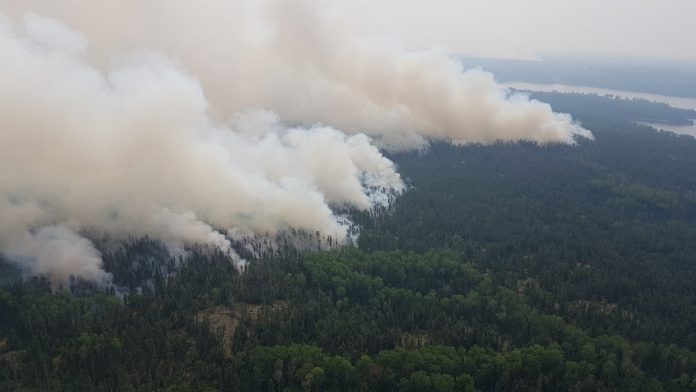High levels of air pollution due to smoke from ongoing forest fires.
Special air quality statement issued for:
South River – Burk’s Falls,
Western Algonquin Park – Lake of Two Rivers,
Huntsville – Baysville,
Haliburton,
Smoke is expected or occurring.
There are currently ten active fires in the region. All of these are being observe
Smoke plumes from active fires in northwestern Ontario and eastern Manitoba have spread into the area. Poor air quality and reduced visibilities are possible if the smoke descends to ground level. Southerly winds are expected to push the smoke northward out of the area late Wednesday.
If you or those in your care are exposed to wildfire smoke, consider taking extra precautions to reduce your exposure. Wildfire smoke is a constantly-changing mixture of particles and gases which include many chemicals that can be harmful to your health.
For more details, please consult www.canada.ca/en/environment-climate-change/services/air-quality-health-index/wildfire-smoke.html.
Individuals may experience symptoms such as increased coughing, throat irritation, headaches or shortness of breath. Children, seniors, and those with cardiovascular or lung disease, such as asthma, are especially at risk.
Visit www.airhealth.ca for information on how to reduce your health risk and your personal contribution to pollution levels, as well as for current and forecast AQHI values.








